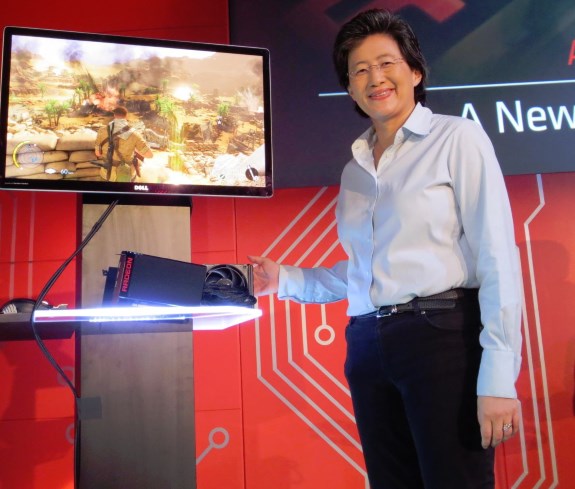
AMD confirmed the existence of four different Fiji based video cards during its livestream, which will be launched under the Radeon R9 Fury series.
First up is the Radeon R9 Fury X, the watercooled flagship that will hit retail shelves on June 24th for $649. The card has a 28nm chip with 8.9 billion transistors, it features 4096 stream processors and delivers 8.6 billion teraflops of raw computing power. The Fury X promises 1.5x the performance-per-Watt as the Radeon R9 290X.
Next in line is the Radeon R9 Fury which will feature air cooling designs. We don't know the exact details of this card but it's coming on July 14th and will cost $549
The third Fiji-based product will be the Radeon R9 Nano, this model will be only 150mm long. It promises higher energy efficiency and launches sometime this summer. AMD's marketing slides claim the Radeon R9 Nano delivers performance in excess of the R9 290X while offering twice the performance-per-Watt!
The final version will be a dual-GPU R9 Fury, this model is marketed as world's fastest video card but other than a launch date sometime in autumn we don't know anything about it.

The Rx 300 series rebrands are expected to be available from June 18th. Pricing is $429 for the R9 390X, $329 for the R9 390, $199 for the R9 380, $149 for the R7 370 and $109 for the R7 360. That's pretty much all the official information, lots of hype but very little hard details were shared.
As far as we know the Radeon R9 390X and R9 390 will be similar to the R9 290 series, the main difference being higher clockspeeds and double the memory. Similarly, the R9 380 features a Tonga based chip with 4GB GDDR5 memory as the default capacity, the R7 370 is based on Trinidad (Pitcairn) with 4GB GDDR5 memory and the R7 360 is based on Tobago (Bonaire) with 2GB GDDR5.